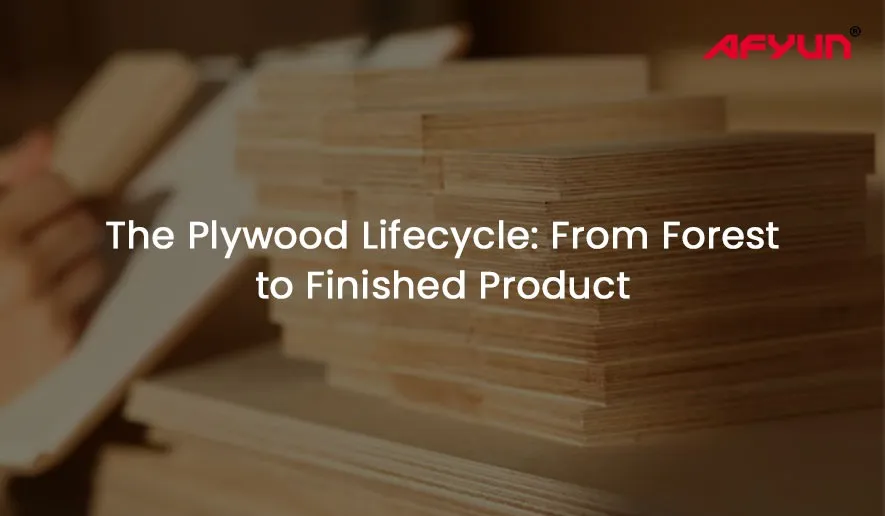Plywood is an essential material in construction, furniture-making, and various other industries. It’s a versatile material known for its strength, durability, and affordability.
But have you ever wondered about the process of plywood creation?
From the serene depths of the forest to the sleek finish of a polished product, let’s unravel the journey of plywood manufacturing.
Step-by-Step: The Journey from Log to Finished Product in Plywood Manufacturing
Step 1: Harvesting From the Forest
It all begins in the heart of the forest. Quality plywood starts with the selection of the right timber. Trees are carefully chosen, ensuring they are mature and possess the ideal characteristics for plywood production.
Sustainable forestry practices are crucial to maintain ecological balance and ensure a continuous supply of raw materials.
Step 2: Log Assessment & Preparation
Once the logs are harvested, they are transported to the plywood manufacturing facility. Here, skilled workers inspect each log and select the best ones for processing.
The logs are evaluated based on size, straightness, and absence of defects such as knots and cracks.
Step 3: Debarking
Before the logs can be transformed into plywood, they need to be stripped of their bark.
Debarking machines are used to remove the outer layer, preparing the logs for the next stage of processing.
Step 4: Veneer Peeling
After debarking, the logs are ready for peeling. They are mounted on a lathe, which rotates them against a sharp blade.
This process produces thin layers of wood called veneers. The quality of the veneers depends on the skill of the operator and the precision of the machinery.
Step 5: Formation of Continuous Veneer Sheets
The veneers are then clipped to size and sorted based on quality. These veneers are then laid out in layers, with the grain direction alternating between each layer.
This cross-grain construction is what provides the plywood its strength and stability.
Step 6: Application of Adhesive
Once the layers are arranged, adhesive is applied to bond them together. The type of adhesive used depends on the intended application of the plywood.
Phenol formaldehyde and urea formaldehyde are commonly used adhesives known for their strength and water resistance.
Step 7: Hydraulic Pressing
The glued veneers are then placed in a hydraulic press, where heat and pressure are applied.
This process ensures proper adhesion between the layers and results in a solid, homogeneous panel.
Step 8: Trimming, Sanding and Finishing
After pressing, the plywood panels are trimmed to size and sanded to achieve a smooth surface.
Additional finishing processes may include the application of coatings or laminates to enhance durability and aesthetics.
Closing Remarks
The journey from forest to finished product is an art of craftsmanship. Each step in the plywood manufacturing process requires skill, precision, and attention to detail.
From the careful selection of timber to the meticulous assembly of layers, every aspect contributes to the quality and performance of the final product.
As consumers, it’s important to appreciate the effort that goes into creating the materials we use every day and to support sustainable practices that ensure the longevity of our natural resources.
Quick Links:
Plywood Price | Plywood Price in India | Calibrated Plywood Price | Gurjan Plywood | Fire Retardant Plywood | Waterproof Plywood | Marine Plywood Price










